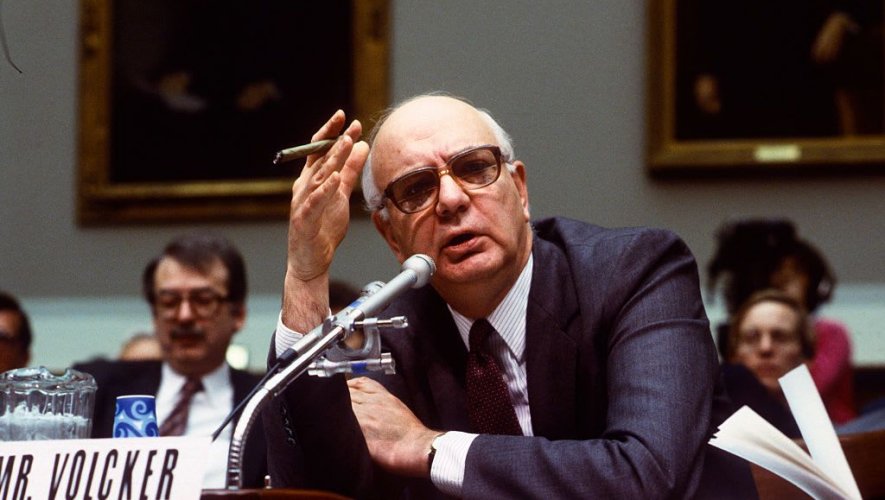The out-pouring of encomia for Paul Volcker, who has died at age 92, would tower over even his own formidable 6 ft. 7 in. (e.g., samples in the Financial Times and the New York Times).
His credits over more than 40 years include the taming of the rampant inflation of the 1980s as Federal Reserve chairman and, post the 2007-2008 financial crisis, the articulation of an eponymous “rule” aimed at the proprietary trading excesses of the investment bankers.
One effort for which he will be little remembered was his ill-fated aspiration to forestall the Enron-driven collapse in 2002 of the Arthur Andersen accounting firm. His proposed “rescue”—floated for three months in the winter of 2002 but effectively dead in the water from the moment of its launch—would have included a cleansing replacement of its leaders with management selected by a new outside board, shrinkage of the firm to “audit only” scope, and negotiations led by his own virtuous self to resolve the Damoclean legal exposures brought by the government and civil litigants.
The Andersen drama included hubris enough to fill a Greek theater: its leaders’ cries of innocence even amid the rubble of its reputation, voracious law enforcement agents displaying their punitive prosecutorial DNA, the plaintiff’s lawyers ratcheting upward their own demands.
And Volcker himself—boldly taking the stage to reprise a familiar role, only to discover that the script made demands beyond his repertoire.
Volcker’s quixotic effort was doomed from the outset, by a trifecta of insurmountable barriers:
- The fragility of Andersen’s organization, as a global network of national partnerships which, lacking the cohesion of a corporate structure supported by shareholder capital, was hostage to the rapid and fatal erosion of individual partner trust, confidence, and mutual commitment.
- The unwillingness of Andersen’s senior leaders to surrender their positions of stature, remuneration and accountability, to be displaced by an outsider from a different profession, however grise his éminence.
- Above all, the unsustainable impact of the multi-billion dollar litigation exposure inflicted on Andersen’s limited capital resources—a mortal blow the instant it fell, that made futile any rescue attempt as too little and too late to stop the disintegration already begun.
One legacy of Volcker’s failed mis-adventure is worth recalling today, in the currently fraught environment in which the structure and business model of the surviving Big 4 firms are under existential threat from politicians and regulators, particularly in the UK. That is, Volcker’s ambitious but benighted initiative was incorporated into the report issued on April 1, 2008, by the US Treasury Department’s Advisory Committee on the Auditing Profession—inspiring the report’s straight-faced suggestion that the audit firms’ governance should include a mandatory management-replacement program in the event of a disintegration threat.
That the Committee’s entire body of deliberations and pronouncements promptly faded without a trace—its risible Volckeresque proposal included—suffices to capture the inadequacies that inhered in the failed attempt at Andersen.
Meanwhile in its aftermath, fresh outbreaks of financial malfeasance mark the passage of the years since the disruptions of the financial crisis of 2007-2008, with intense public criticism rather than the introduction of sustainable “solutions” dominating the debate around the fitness of the current Big Audit model.
Paul Volcker himself was never heard to admit that he lacked sufficient appreciation of the issues to comprehend the futility of his efforts. A dose of that humility would have spared him a conspicuous failure. If true for a figure of his considerable stature, the same would be prudent today for those critics tempted to prescribe impracticalities far beyond their own vision and competence.
[Ed. note: This article was originally published on Re:Balance on Dec. 11. It has been re-published with permission.]
Jim Peterson is a 19-year veteran of Arthur Andersen’s internal legal group. He has been writing about the accounting firms and the Big Audit model since 2002, on his blog, Re:Balance, and in his two books, “Count Down: The Past, Present and Uncertain Future of the Big Four Accounting Firms” (2d ed. 2017) and, just released this May, “DOA: Can Big Audit Survive the UK Regulators?”


